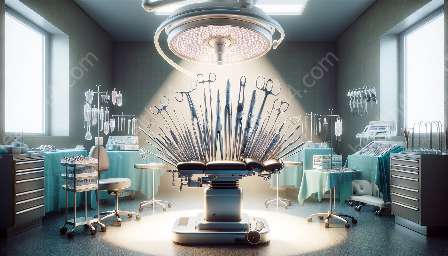Blood pressure monitoring is a critical aspect of healthcare, playing a vital role in the prevention and management of cardiovascular diseases. In this comprehensive guide, we will delve into the fascinating world of blood pressure monitors (BPM), exploring their functionality, application in conjunction with surgical instruments, and compatibility with medical devices and equipment. We will also discuss the importance of accurate blood pressure measurements for patient care and the key features to consider when choosing a suitable BPM for clinical and home use.
Blood Pressure Monitor Overview
Blood pressure monitors are electronic devices that measure the force of blood against the walls of the arteries as the heart pumps it around the body. High blood pressure, or hypertension, can lead to serious health issues, including heart disease and stroke, making regular monitoring essential for many individuals.
The two main types of BPM are digital and manual. Digital monitors are widely used due to their ease of use and accuracy. They typically consist of an inflatable cuff, a pressure sensor, and a digital display. Manual monitors, on the other hand, require the use of a stethoscope and are often utilized in clinical settings by healthcare professionals.
Device Compatibility with Surgical Instruments
The compatibility of blood pressure monitors with surgical instruments is crucial in ensuring seamless patient care. Surgical procedures can impact blood pressure levels, and having a reliable monitor that can integrate with operating room equipment is essential. Modern BPMs are designed to be compatible with various surgical instruments and can seamlessly interface with operating room monitors to provide real-time blood pressure readings during surgical procedures.
Compatibility with Medical Devices and Equipment
Blood pressure monitors are designed to complement other medical devices and equipment, such as ECG machines, ventilators, and anesthesia systems. Interoperability is crucial in a medical setting, and BPMs are equipped with interfaces and communication protocols that allow them to synchronize with other devices, providing a holistic view of the patient’s vital signs and enabling comprehensive patient monitoring.
Benefits of Using Blood Pressure Monitors
Accurate and Timely Monitoring: BPMs allow for the accurate and timely measurement of blood pressure, enabling healthcare professionals to quickly identify and address any abnormal fluctuations.
Patient Self-Monitoring: Many modern BPMs are designed for home use, empowering patients with the ability to monitor their blood pressure regularly and communicate relevant trends to their healthcare providers.
Integration with Electronic Health Records (EHR): BPMs can store and transmit blood pressure data to electronic health record systems, facilitating seamless documentation and analysis of patient information.
Diagnostic Support: Blood pressure monitoring is an integral part of diagnosing and managing cardiovascular conditions, providing valuable insights for physicians in developing treatment plans.
Features to Look for in a Blood Pressure Monitor
Accuracy and Calibration: Look for BPMs that are clinically validated and regularly calibrated to ensure accurate measurements.
Cuff Size and Design: The cuff’s proper fit and design are essential for accurate readings. Select BPMs that offer various cuff sizes to accommodate different arm circumferences.
Memory and Data Storage: For home use, consider BPMs with the ability to store multiple readings, allowing users to track trends over time.
User-Friendly Interface: Easy-to-read displays and intuitive controls make BPMs more user-friendly for patients and healthcare professionals alike.
Final Thoughts
Blood pressure monitors are indispensable tools in healthcare, contributing to the prevention, early detection, and management of hypertension and related conditions. Their compatibility with surgical instruments and medical devices makes them a vital component in various healthcare settings, from hospitals and clinics to patients’ homes. By understanding the key features and benefits of blood pressure monitors, healthcare providers and patients can make informed decisions to ensure optimal cardiovascular health and well-being.


